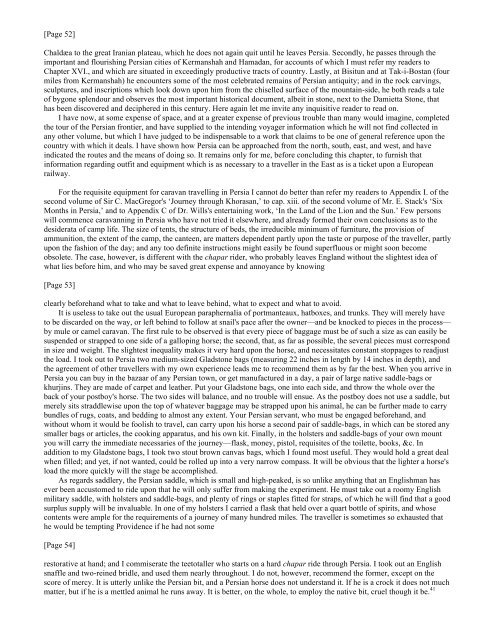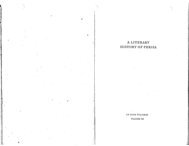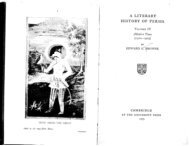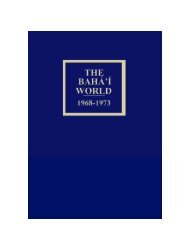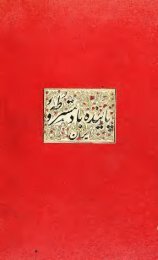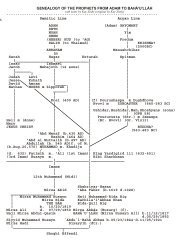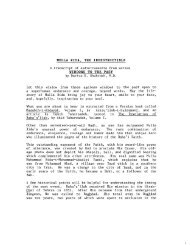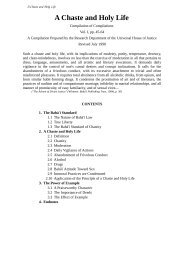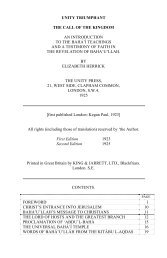nicely-formatted PDF - Featured Products
nicely-formatted PDF - Featured Products
nicely-formatted PDF - Featured Products
Create successful ePaper yourself
Turn your PDF publications into a flip-book with our unique Google optimized e-Paper software.
[Page 52]<br />
Chaldæa to the great Iranian plateau, which he does not again quit until he leaves Persia. Secondly, he passes through the<br />
important and flourishing Persian cities of Kermanshah and Hamadan, for accounts of which I must refer my readers to<br />
Chapter XVI., and which are situated in exceedingly productive tracts of country. Lastly, at Bisitun and at Tak-i-Bostan (four<br />
miles from Kermanshah) he encounters some of the most celebrated remains of Persian antiquity; and in the rock carvings,<br />
sculptures, and inscriptions which look down upon him from the chiselled surface of the mountain-side, he both reads a tale<br />
of bygone splendour and observes the most important historical document, albeit in stone, next to the Damietta Stone, that<br />
has been discovered and deciphered in this century. Here again let me invite any inquisitive reader to read on.<br />
I have now, at some expense of space, and at a greater expense of previous trouble than many would imagine, completed<br />
the tour of the Persian frontier, and have supplied to the intending voyager information which he will not find collected in<br />
any other volume, but which I have judged to be indispensable to a work that claims to be one of general reference upon the<br />
country with which it deals. I have shown how Persia can be approached from the north, south, east, and west, and have<br />
indicated the routes and the means of doing so. It remains only for me, before concluding this chapter, to furnish that<br />
information regarding outfit and equipment which is as necessary to a traveller in the East as is a ticket upon a European<br />
railway.<br />
For the requisite equipment for caravan travelling in Persia I cannot do better than refer my readers to Appendix I. of the<br />
second volume of Sir C. MacGregor's ‘Journey through Khorasan,’ to cap. xiii. of the second volume of Mr. E. Stack's ‘Six<br />
Months in Persia,’ and to Appendix C of Dr. Wills's entertaining work, ‘In the Land of the Lion and the Sun.’ Few persons<br />
will commence caravanning in Persia who have not tried it elsewhere, and already formed their own conclusions as to the<br />
desiderata of camp life. The size of tents, the structure of beds, the irreducible minimum of furniture, the provision of<br />
ammunition, the extent of the camp, the canteen, are matters dependent partly upon the taste or purpose of the traveller, partly<br />
upon the fashion of the day; and any too definite instructions might easily be found superfluous or might soon become<br />
obsolete. The case, however, is different with the chapar rider, who probably leaves England without the slightest idea of<br />
what lies before him, and who may be saved great expense and annoyance by knowing<br />
[Page 53]<br />
clearly beforehand what to take and what to leave behind, what to expect and what to avoid.<br />
It is useless to take out the usual European paraphernalia of portmanteaux, hatboxes, and trunks. They will merely have<br />
to be discarded on the way, or left behind to follow at snail's pace after the owner—and be knocked to pieces in the process—<br />
by mule or camel caravan. The first rule to be observed is that every piece of baggage must be of such a size as can easily be<br />
suspended or strapped to one side of a galloping horse; the second, that, as far as possible, the several pieces must correspond<br />
in size and weight. The slightest inequality makes it very hard upon the horse, and necessitates constant stoppages to readjust<br />
the load. I took out to Persia two medium-sized Gladstone bags (measuring 22 inches in length by 14 inches in depth), and<br />
the agreement of other travellers with my own experience leads me to recommend them as by far the best. When you arrive in<br />
Persia you can buy in the bazaar of any Persian town, or get manufactured in a day, a pair of large native saddle-bags or<br />
khurjins. They are made of carpet and leather. Put your Gladstone bags, one into each side, and throw the whole over the<br />
back of your postboy's horse. The two sides will balance, and no trouble will ensue. As the postboy does not use a saddle, but<br />
merely sits straddlewise upon the top of whatever baggage may be strapped upon his animal, he can be further made to carry<br />
bundles of rugs, coats, and bedding to almost any extent. Your Persian servant, who must be engaged beforehand, and<br />
without whom it would be foolish to travel, can carry upon his horse a second pair of saddle-bags, in which can be stored any<br />
smaller bags or articles, the cooking apparatus, and his own kit. Finally, in the holsters and saddle-bags of your own mount<br />
you will carry the immediate necessaries of the journey—flask, money, pistol, requisites of the toilette, books, &c. In<br />
addition to my Gladstone bags, I took two stout brown canvas bags, which I found most useful. They would hold a great deal<br />
when filled; and yet, if not wanted, could be rolled up into a very narrow compass. It will be obvious that the lighter a horse's<br />
load the more quickly will the stage be accomplished.<br />
As regards saddlery, the Persian saddle, which is small and high-peaked, is so unlike anything that an Englishman has<br />
ever been accustomed to ride upon that he will only suffer from making the experiment. He must take out a roomy English<br />
military saddle, with holsters and saddle-bags, and plenty of rings or staples fitted for straps, of which he will find that a good<br />
surplus supply will be invaluable. In one of my holsters I carried a flask that held over a quart bottle of spirits, and whose<br />
contents were ample for the requirements of a journey of many hundred miles. The traveller is sometimes so exhausted that<br />
he would be tempting Providence if he had not some<br />
[Page 54]<br />
restorative at hand; and I commiserate the teetotaller who starts on a hard chapar ride through Persia. I took out an English<br />
snaffle and two-reined bridle, and used them nearly throughout. I do not, however, recommend the former, except on the<br />
score of mercy. It is utterly unlike the Persian bit, and a Persian horse does not understand it. If he is a crock it does not much<br />
matter, but if he is a mettled animal he runs away. It is better, on the whole, to employ the native bit, cruel though it be. 41


